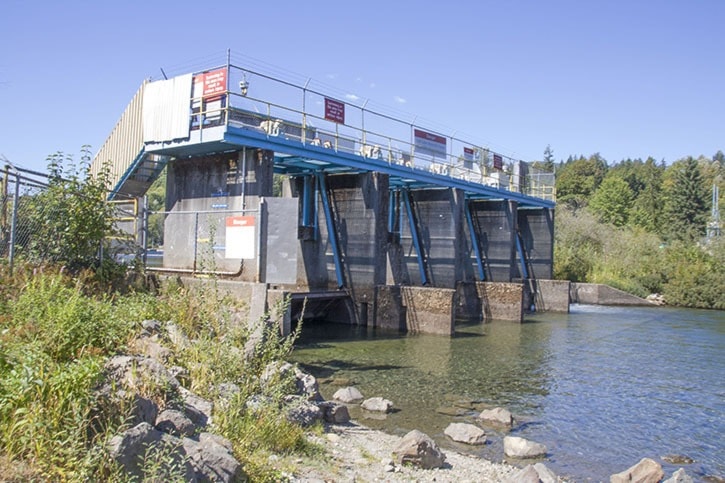As part of ongoing efforts to sustain the Cowichan River, Catalyst Paper announced Aug. 24 that it is making preparations to pump water from Cowichan Lake into the river to maintain minimum flow rates.
It’s all about preventing the Cowichan from running dry as a result of the negligible spring snowpack and the dry summer.
Given current weather conditions, the company expects pumping may be required by mid-September.
“Keeping the river running is the right thing to do to protect community interests, fish and wildlife, and to help avoid a temporary shutdown of the Crofton mill, which employs approximately 600 local workers,” said Brian Houle, the environmental manager at the Crofton pulp mill.
“We’re making the preparations so that we could start if needed. This is all about having infrastructure in place that we could push a button and make it happen when we need to make it happen.”
But Lake Cowichan residents are likely to be curious about any activity at the weir.
“We know people will be driving by the weir and it’s busy as a beehive up there. We want to make sure they are alerted to what’s going on,” Houle said, referring to the construction work by BC Hydro and other contractors near the boat lock.
“One of the first things is to have a concrete pad at ground level for the transformers to be mounted on to. Because we will be bringing in electricity instead of the diesel generators that was the original plan. It will look different, but it looks less different than it would if we had gone with the diesel generators.
Mostly, this is a much better plan,” he said.
“We have made a significant effort to minimize any inconvenience to the local residents by tapping into power lines to electrify pumps,” said Houle. “This avoids noise, emission and fuel handling that would have been involved if shore-based diesel generators were used as was originally anticipated.”
Between now and Sept. 20 Catalyst will have the ability to start the pumps.
“And we will have trialed them. We would be ready on Sept. 20 if that is what happens.”
There’s no guarantee that Sept. 20 will be pumping day if rain rolls in.
“Last year we had the pumps and everything ready in Langley on a three-weeks’ notice. And last year on Aug. 31 we got that rainfall. We shouldn’t have had that rain. It was unexpected. We are not planning on it this year,” Houle said.
“The pumps will be installed this year because there is nothing that could happen other than a huge rainfall to stop that,” he said.
If and when pumping is required, Catalyst will use approximately 30 per cent of the pumped water for the Crofton Mill and for domestic use by the village of Crofton. The other 70 per cent will be used for conservation purposes to support fish populations in the Cowichan River.
If pumping proceeds, it is expected to continue until Cowichan Lake is recharged from rainfall and is once again supplying the river.
An independent, qualified environmental professional will monitor lake levels and provide a bi-weekly report to regulators throughout the pumping operation, Houle said.
Catalyst is committed to working with First Nations and local governments to find a long-term solution to ensure the health of the Cowichan River, he said.
This includes looking at options to raise the height of the weir, which would increase water storage, allow for greater control during drought conditions in the future and to keep the river healthy.
Catalyst will advise the community if and when pumping is required.
